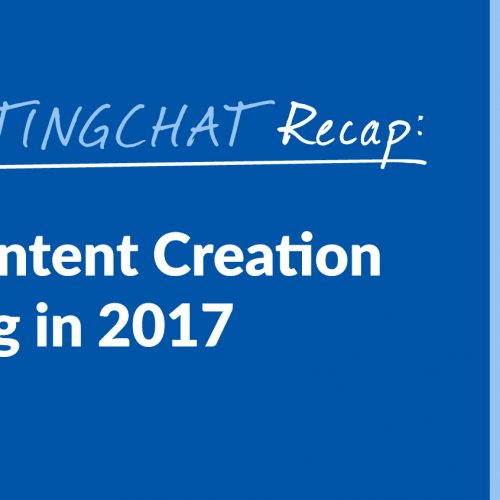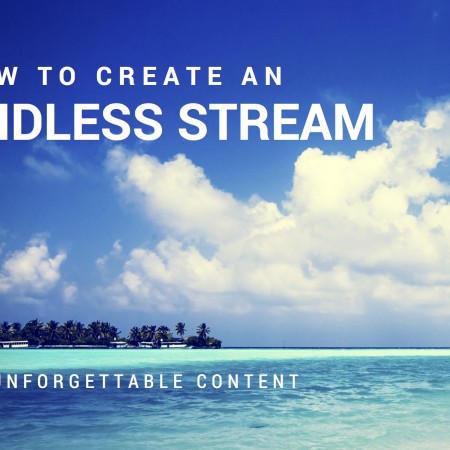#ContentWritingChat Recap: Successful Content Creation and Marketing in 2017 with Don Purdum
Did you catch our latest #ContentWritingChat over on Twitter? If not, you missed one informative chat! We talked all about successful content creation to help you prepare for the year ahead. If you missed out or you need a refresher on all those amazing tips, this recap is for you! #ContentWritingChat Recap: Successful Content Creation and Marketing in 2017 with Don Purdum Join us for #ContentWritingChat on Tuesday, January 24th at 10 AM CST with @donpurdum! pic.twitter.com/0Rm2dGgGCT — Express Writers (@ExpWriters) January 17, 2017 For this week’s chat, our guest host was Don Purdum. Don is an award-winning blogger and a marketing consultant. He joined us to share his top content creation and marketing tips so you can put them to use for your brand this year. Q1: Why is it vital to have a relevant message for your audience, especially in 2017? It’s so important, now more than ever, to make sure you’re sharing a message that’s relevant to your audience. But do you know why? We’ve got the answer, courtesy of our chat participants! A1: #1 – Relevance determines how they experience you based on their problems, needs, wants or desires. #contentwritingchat — Don Purdum (@donpurdum) January 24, 2017 A1 – #2 If your content is all about you, what incentive does your audience have to read, comment, share or link? #contentwritingchat — Don Purdum (@donpurdum) January 24, 2017 Don said that relevance determines how your audience experiences you based on their problems, needs, wants, or desires. He also brought up a great point that your content shouldn’t be all about you. It needs to provide some sort of incentive to your audience to get them read, comment, share, and link to you. A1) How else will your audience resonate with your message? Connect w/ them & show you understand their needs. #Empathy #ContentWritingChat pic.twitter.com/IW451TXr6b — Jason Schemmel (@JasonSchemmel) January 24, 2017 As Jason said, without a relevant message, your audience won’t resonate with you. You have to develop a connection with them and understand their needs. A1 – Talking to everyone = talking to no one. Know thy audience (like you went to camp together) #ContentWritingChat — James Ellis (@thewarfortalent) January 24, 2017 Jason pointed out that talking to everyone is essentially talking to no one. You aren’t going to attract your ideal audience if you aren’t directly speaking to them and addressing their needs. @ExpWriters A1: Relevancy is the first step in standing out in an already crowded space. If it isn’t relevant, it won’t be read #ContentWritingChat pic.twitter.com/xWE0dEBxCN — Jacob Rouser (@J_Rouser) January 24, 2017 A relevant message is going to help you stand out in an otherwise crowded online space. Jacob said you need to produce a relevant message if you want your content to be read. A1 there’s so much noise & limited ⏰ to consume it all. A clear message helps us to decide if the content is worth our⏰ #contentwritingchat https://t.co/I5UWms6fgM — Savannah Shea Blake (@Vannasana) January 24, 2017 As Savannah said, there’s a lot of noise online today. We have to be wise about what we choose to consume. When you provide a clear message to your audience, it will help them easily decide if your content is right for them and worth their time. A1 Relevant content = winning content! Content that your readers/audience will LOVE, & shake their heads “YES” about! #ContentWritingChat pic.twitter.com/QtdzMkQ1HG — Julia McCoy ? (@JuliaEMcCoy) January 24, 2017 Our CEO, Julia, is spot on with her answer. Relevant content = winning content! You want to create the content your audience will love. Q2: Define giving value in content marketing. How do I know if my audience receives it? We know it’s important to give our audience tremendous value in the content we create, but what does that actually mean? And how can you tell if your audience has received value? Here’s what you need to know: A2 – I define value as solving one problem, meeting one need, or fulfilling one desire, for one person. #contentwritingchat — Don Purdum (@donpurdum) January 24, 2017 A2 – Audience receives it when you start seeing social indicators like large shares or links, comments… #contentwritingchat — Don Purdum (@donpurdum) January 24, 2017 For Don, he feels that providing value is when you can solve a problem your audience is facing or meeting one of their needs. He also said that you can tell your audience has received value when you notice things like social media shares, links to your content, and comments. Value in #contentmarketing means you are giving your audience information that is useful to them in one way or another. #ContentWritingChat — Christoph Trappe (@CTrappe) January 24, 2017 Christoph said that you provide value to your audience when you give them content that is useful in some way. A2 Content value = when you research, write, create the BEST answer to your audience’s questions. ?? You’ll see return. #ContentWritingChat — Julia McCoy ? (@JuliaEMcCoy) January 24, 2017 Julia knows that when you research, write, and create the best answer to your audience’s questions, you provide tremendous value. A2: You provide value by knowing your audience and what they need/want. You know they “got” it when actions happen!#ContentWritingChat https://t.co/7dJLxjhhwq — ThinkSEM (@ThinkSEM) January 24, 2017 Sarah from ThinkSEM said you can provide value to your audience by knowing what they need and want and delivering on it. When you see them taking action, that’s when you know they’ve received the value you aimed to provide. A2 Are you speaking to their needs? Are they giving you their attention? Reading, commenting, buying, coming back? #ContentWritingChat https://t.co/ZCzWVbCTml — Zala Bricelj (@ZalkaB) January 24, 2017 Zala brought up some great questions you can ask yourself to determine if you’re providing value. Are you speaking to the needs of your audience? Are they giving you their attention? Are they actually reading your content, leaving comments, buying what you’re offering, or coming back for more? A2 Engagement tells you. And ultimately conversions. … Read more









